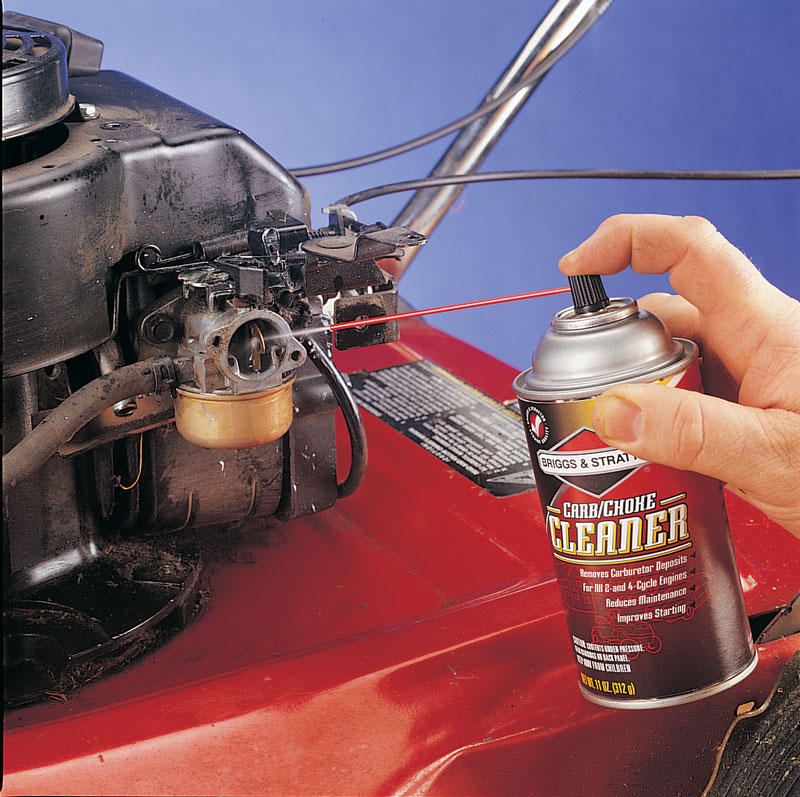Picture this: a sunny day, the gentle hum of your lawnmower as you meticulously trim your grass, creating a pristine lawn. Suddenly, the engine sputters, coughs, and dies. The idyllic moment is shattered, replaced by frustration and the looming question – what went wrong? Often, the culprit behind such lawnmower woes is the carburetor, the intricate heart of your engine’s fuel system. Understanding the inner workings of your Briggs & Stratton carburetor, using its diagram as your guide, can be the key to regaining control over your mowing adventures.

Image: replacementparts.netlify.app
This article dives deep into the world of Briggs & Stratton carburetor diagrams, revealing the secrets behind their design and function. From pinpointing vital components to understanding their roles, we’ll illuminate the path to better understanding and maintenance of your lawnmower’s vital fuel delivery system.
Deciphering The Briggs & Stratton Carburetor Diagram
The Briggs & Stratton carburetor diagram is more than just a collection of lines and labels. It’s a roadmap to the intricate mechanisms responsible for mixing fuel and air, the lifeblood of your lawnmower’s engine. It’s a language that needs to be mastered to understand how your lawnmower operates.
Understanding the Basics
Before we delve into the specifics, let’s establish the fundamental principles that govern the Briggs & Stratton carburetor. At its core, a carburetor acts as a fuel-air mixer. It draws air in through an air filter, mixes it with precisely measured fuel, and delivers this combustible mixture to the engine’s combustion chamber. This delicate dance of air and fuel, orchestrated by the carburetor, is what powers your lawnmower.
The Key Players
-
Float Chamber: A reservoir that houses the fuel for the carburetor. The float level controls the amount of fuel within the chamber.
-
Float: A device within the float chamber that rises and falls as the fuel level fluctuates, acting as a sensor for the float valve.
-
Float Valve: A valve that controls the inflow of fuel into the float chamber. When the float rises, it triggers the float valve to close, preventing fuel overflow.
-
Venturi: A constricted throat within the carburetor where air accelerates, creating a vacuum that pulls fuel from the float chamber.
-
Jet: A small opening that carefully controls the amount of fuel entering the venturi. The size of the jet dictates the fuel-to-air ratio.
-
Throttle Valve: A plate that controls the amount of air entering the venturi, ultimately regulating the engine’s speed.
-
Choke: This device enriches the fuel mixture by restricting airflow, helping a cold engine start more easily.
Decoding the Diagram
Now, armed with this foundational knowledge, let’s navigate your Briggs & Stratton carburetor diagram.
-
Identify the Main Components: Locate the key components mentioned above: float chamber, float, float valve, venturi, jet, throttle valve, and choke. Each of these components will be highlighted in the diagram.
-
Follow the Fuel Path: Trace the pathway of fuel from the fuel tank through the carburetor to the engine. This journey will reveal how fuel levels are maintained and how the fuel-air mixture is created.
-
Trace the Airflow: Observe how air enters the carburetor, travels through the venturi, and mixes with fuel.
-
Explore the Adjustments: Pay attention to any adjustment screws or linkages on the carburetor. These are generally used to fine-tune the fuel-air mixture, often by regulating the position of the jet or throttle valve.
Mastering the Carburetor: Maintenance and Troubleshooting
Armed with a firm understanding of the Briggs & Stratton carburetor diagram, you’re one step closer to becoming a lawnmower maintenance maestro. Here are some key steps for keeping your carburetor running smoothly:
Regular Maintenance
-
Clean the Carburetor: Over time, debris can accumulate in the carburetor, clogging the fuel lines and jets, disrupting the delicate fuel-air balance. Cleaning it regularly with a carburetor cleaning kit can restore optimal performance.
-
Inspect the Float and Float Valve: Make sure the float is buoyant and that the valve opens and closes smoothly. Any sticking or malfunction can cause fuel flooding or starvation.
-
Check the Jets: Inspect the jets for any blockages. These tiny openings are prone to clogging, requiring careful cleaning with a fine wire or air pressure.
Troubleshooting Common Issues
-
Engine Won’t Start Easily: This can indicate a clogged carburetor, a faulty choke, or a blocked fuel line.
-
Engine Stalls or Runs Rough: A clogged jet, a dirty air filter, or a malfunctioning float valve can lead to these issues.
-
Engine Overheats: A rich fuel mixture, caused by a clogged jet or faulty float valve, can result in excessive heat.
-
Black Smoke From Engine: This signifies an over-rich fuel mixture, usually due to a clogged jet or a malfunctioning float valve.
-
Engine Backfires: This could be caused by a lean fuel mixture, often due to a clogged jet, a dirty air filter, or a leak in the intake manifold.
Expert Tips
- Consult the Owner’s Manual: Your lawnmower’s manual will provide detailed instructions for troubleshooting common carburetor problems.
- Seek Professional Help: If you encounter complex carburetor issues, don’t hesitate to consult with a qualified mechanic. They have the tools and expertise to diagnose and repair the problem efficiently.

Image: manuallibrichards.z19.web.core.windows.net
Lawn Mower Carburetor Diagram Briggs And Stratton
The Key To a Healthy Lawn
The Briggs & Stratton carburetor diagram is your gateway to understanding the heart of your lawnmower. By familiarizing yourself with its intricacies and mastering the basics of maintenance and troubleshooting, you’ll unlock the power to keep your lawnmower running flawlessly and your grass looking pristine. So, embrace the knowledge, learn from the diagram, and reclaim the joy of a well-maintained lawn!





